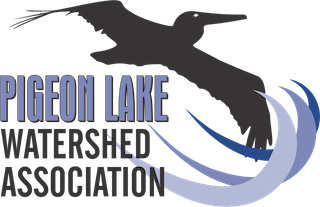
Residential Construction
When building a new home or cottage in the watershed, design and implement measures that will help protect the lake and enhance property value.
Building or Renovating in the Watershed
1. Identify environmentally sensitive areas
Take photos of drainage courses, creeks, streams, wetlands, ditches, tread areas, shoreline or bank vegetation, and protected nature reserves on or adjacent to your property to share with the development officer and contractor.
2. Learn about best practices for construction in a watershed – it’s the responsibility of the watershed property owner!
In the planning stage, review the Alberta Clean Runoff Action Guide 2020 and contact PLWA for a Clean Runoff Property Assessment. PLWA will provide guidance on lake-friendly practices and information on how to minimize damage that occurs during construction.
Permits
Development and landscaping projects within Pigeon Lake watershed, including shoreline modifications (e.g. removing vegetation), are subject to regulations that protect the environment including municipal bylaws as well as provincial and federal regulations (e.g. Alberta Water Act). Contact the appropriate authorities for approvals, failing to do so may lead to provincial fines and significant remediation costs.
3. Select a lake-friendly contractor
Ensure the contractor is aware of all best management practices (BMPs) and regulations for development in a watershed.
Ask the contractor to:
Propose and implement clean runoff solutions during construction
Identify applicable municipal watershed regulations e.g. limitations of impermeable surfaces or tree removal bylaws
Identify plans for protection of healthy trees and natural vegetation
Specify their construction practices for working in a watershed e.g. erosion and sediment control plan
4. During construction
Develop an Environmental Construction Operations Plan to identify: how waste (air pollution, ground deposits, packaging litter, toxic chemicals) will be managed; what chemicals will be used; considerations for environmentally sensitive areas; runoff prevention; and, how to minimize soil compaction.
Install protective barriers around healthy vegetation.
Implement an Erosion and Sediment Control Plan (e.g. covering stockpiles). Soil, pollutants and sediment can be exposed during new construction. Without proper controls the ecology of the lake will be negatively impacted.
5. After construction
Lake-friendly landscaping should be completed as soon as possible following development. Exposed soil (bare ground) negatively impacts lake health in many ways. Exposed soil can become pollution through airborne dust and stormwater runoff. It is also a breeding ground for invasive and noxious weeds.
Some solutions include:
Replacing a topsoil depth of at least 30 cm under turf and 60 cm under planting beds
Planting a large variety of native plants
Restoring, protecting, and promoting the health of the natural riparian areas
Complete post-construction cleanup of construction site and adjacent areas
Alberta Clean Runoff Action Guide on Lake-friendly Landscaping







